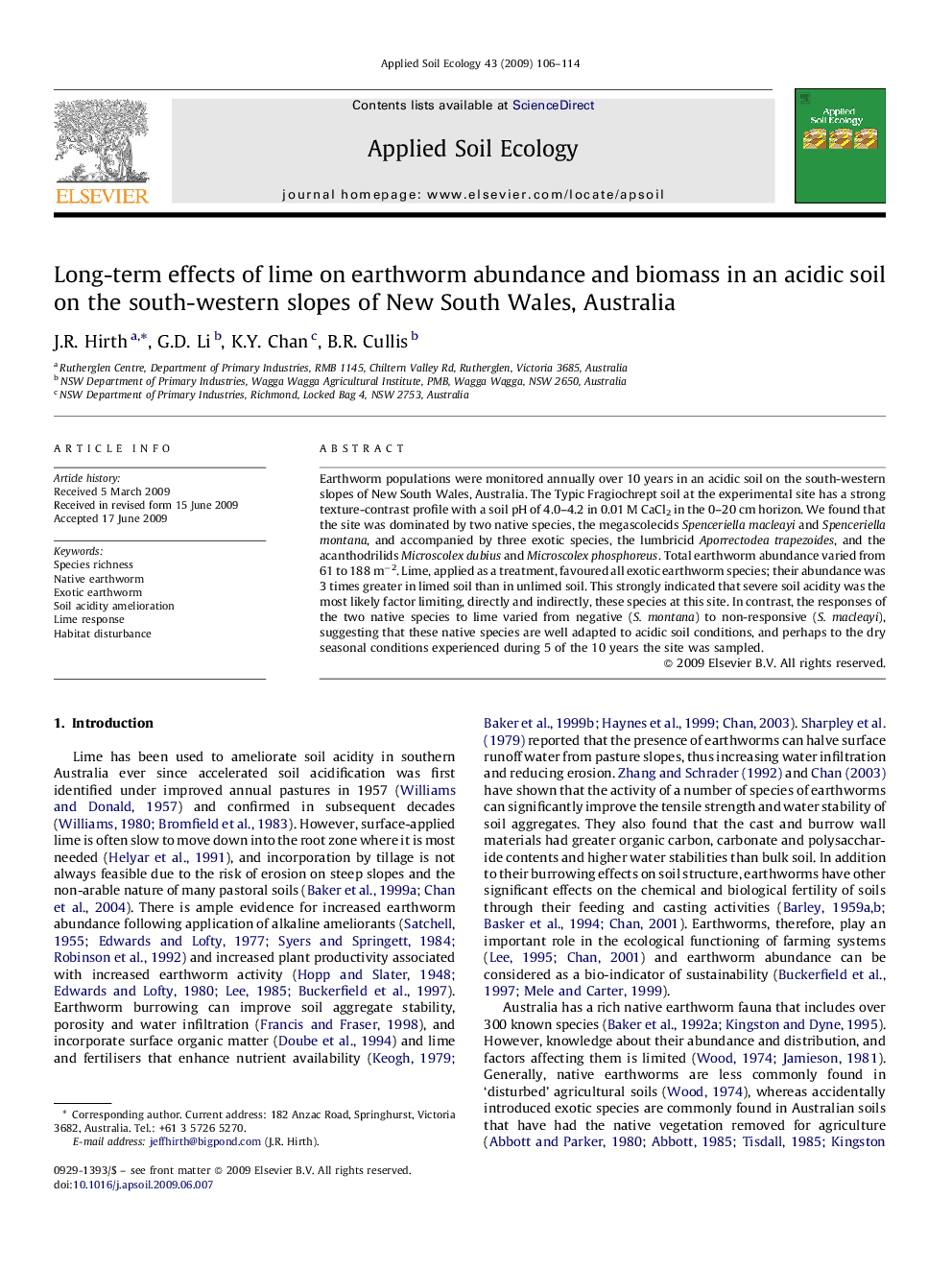| Article ID | Journal | Published Year | Pages | File Type |
|---|---|---|---|---|
| 4382988 | Applied Soil Ecology | 2009 | 9 Pages |
Abstract
Earthworm populations were monitored annually over 10 years in an acidic soil on the south-western slopes of New South Wales, Australia. The Typic Fragiochrept soil at the experimental site has a strong texture-contrast profile with a soil pH of 4.0-4.2 in 0.01Â M CaCl2 in the 0-20Â cm horizon. We found that the site was dominated by two native species, the megascolecids Spenceriella macleayi and Spenceriella montana, and accompanied by three exotic species, the lumbricid Aporrectodea trapezoides, and the acanthodrilids Microscolex dubius and Microscolex phosphoreus. Total earthworm abundance varied from 61 to 188Â mâ2. Lime, applied as a treatment, favoured all exotic earthworm species; their abundance was 3 times greater in limed soil than in unlimed soil. This strongly indicated that severe soil acidity was the most likely factor limiting, directly and indirectly, these species at this site. In contrast, the responses of the two native species to lime varied from negative (S. montana) to non-responsive (S. macleayi), suggesting that these native species are well adapted to acidic soil conditions, and perhaps to the dry seasonal conditions experienced during 5 of the 10 years the site was sampled.
Keywords
Related Topics
Life Sciences
Agricultural and Biological Sciences
Ecology, Evolution, Behavior and Systematics
Authors
J.R. Hirth, G.D. Li, K.Y. Chan, B.R. Cullis,
